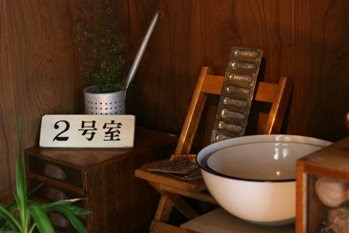It has been getting necessary for recent Japanese cafes to have something unique as well as to offer a delicious cup of coffee.A lot of cafes have some space even if the size of the cafe is very small to show or sell something like stationery, tableware, antiques, books or clothes which match the concept and image of the cafe.Generally, a large cafe is less popular than a small one in Japan, so the number of small cafes are increasing and the owners are trying to make their rooms unique and comfortable. Triton cafe in Kobe is one example of recent cafes.
Triton cafe in Kobe is one example of recent cafes.
The space is not large nor small, and you can spend time comfortably either by yourself or with your friends.


 Food and desserts are nice, and you can visit there only to see the shop without having coffee.
Food and desserts are nice, and you can visit there only to see the shop without having coffee.
This kind of cafe+shop is growing in popularity.Some cafes are selling tableware as well as offering food and coffee.



 One example is "Cafe Tabatha" in Nishinomiya.
One example is "Cafe Tabatha" in Nishinomiya.
You can have lunch or cup of coffee on the second floor of this cafe, and also see and buy some tableware on the first floor.
Food and drink are served with the same tableware as ones in the shop, so you can buy your favorite tableware after using them.
Plus, you can learn how to arrange food on dish at this kind of cafe.
 Incidentally, "Cafe Tabatha" is inside of the owner's home.
Incidentally, "Cafe Tabatha" is inside of the owner's home.
This picture is the owner's living room as well as the cafe.
This type of "Ouchi-cafe", which means home cafe, is also increasing recently.
 Daiki Tanaka made them, who began making pottery six years ago.
Daiki Tanaka made them, who began making pottery six years ago.
























 Now, European/American style cafes have been popular in Japan.
Now, European/American style cafes have been popular in Japan.




















